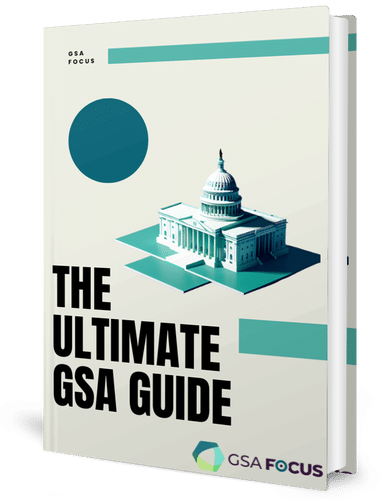Welcome to our comprehensive guide on the federal government procurement process. If you’re a company seeking federal contract opportunities or looking to understand how the government procurement system works, you’ve come to the right place. In this article, we’ll provide you with a detailed overview and insights into the federal procurement process, including the steps involved, key stages, methods of procurement, important considerations, and resources available.
Government procurement plays a vital role in the U.S. economy, with billions of dollars spent each year on goods and services. Understanding the process can help your business navigate the complexities and seize federal contract opportunities. So, let’s dive in and explore the intricacies of the federal government procurement process.
Understanding the Federal Procurement Process
Table of Contents
ToggleThe federal procurement process plays a vital role in the government bid process and the overall federal bidding process. It involves multiple steps that ensure fair competition and adherence to regulations. Understanding this process is essential for businesses aiming to secure federal contract opportunities. Let’s delve into the key aspects of the federal procurement process.
Identifying Goods and Services Requirements
The first step in the federal procurement process is for government agencies to identify their goods and services requirements. This involves determining the specific needs and quantities required to fulfill their missions and provide public services.
Conducting Market Research
Once the requirements are identified, market research is conducted to find potential suppliers who can meet those requirements. This research helps agencies explore the marketplace and gather information about available vendors, pricing, capabilities, and past performance.
Soliciting Bids
After conducting market research, the government agency proceeds to solicit bids from interested suppliers. This is done through various websites, such as the System for Award Management (SAM), FedBizOpps, and agency-specific portals. The solicitation process ensures transparency, fairness, and compliance with statutes and regulations.
Binding the Government through Contracts
Once bids are received, the contracting officer evaluates the offers and selects the most advantageous proposal. Different types of contracts may be used in the federal procurement process, depending on the nature of the goods or services being procured. These can include fixed-price contracts, cost reimbursement contracts, and task order contracts.
Tracking Documents with Procurement Software
To streamline the federal procurement process, contractors utilize specialized procurement software to track essential documents. This software helps manage the lifecycle of a contract, track deliverables and invoices, and ensure compliance with reporting requirements.
Understanding the federal procurement process is crucial for businesses looking to participate in government contracts. By familiarizing themselves with the process and following all regulations, they can increase their chances of securing federal contract opportunities.
Key Stages of the Federal Procurement Process
The federal procurement process consists of several key stages that enable government agencies to successfully acquire the goods and services they need. These stages ensure a structured and efficient approach to procurement. Let’s explore each stage in detail:
1. Procurement Planning
Procurement planning is the initial stage of the federal procurement process. During this stage, government agencies assess their requirements and determine the quantity and specifications of the goods and services they need. It involves careful analysis and forecasting to ensure that the procurement aligns with the agency’s goals and budget.
2. Market Research
Market research is a vital stage in the federal procurement process. Agencies conduct market research to identify potential suppliers who can meet their specific requirements. This stage involves gathering information about the market, existing suppliers, and industry trends. Market research helps agencies make informed decisions and facilitates effective competition among suppliers.
3. Solicitation
The solicitation stage involves government agencies reaching out to potential vendors to submit their proposals or bids. During this stage, agencies publish solicitations on dedicated websites, outlining their requirements, evaluation criteria, and contractual terms. Interested vendors are invited to submit their offers, which are then evaluated based on factors such as legal eligibility, resources, and past performance.
4. Contracting Stage
The contracting stage is where the contracting officer legally binds the government to the selected vendor(s) and administers the performance of the contract. This stage involves negotiating and finalizing the contract terms, including pricing, delivery schedules, and performance expectations. The contracting officer ensures compliance with relevant regulations and monitors contract execution to ensure that the government receives the desired goods and services.
Methods of Procurement
When it comes to the federal government procurement process, there are several methods of procurement that agencies can utilize based on their specific requirements and cost-effectiveness. These methods encompass a range of approaches, from shared services and agreements between agencies to formal and informal procurement methods.
Shared Services and Agreements
One method of procurement is through shared services and agreements between different federal agencies. This approach allows agencies to collaborate and pool their resources to meet their procurement needs efficiently. By leveraging the expertise and capabilities of other agencies, the government can achieve cost savings and streamline the procurement process.
Informal Methods
Informal methods of procurement, such as small purchases and micro purchases, are commonly used for acquiring goods and services in the federal government. Small purchases involve procurement of low-value items, usually below a certain threshold, through simplified procedures. Micro purchases, on the other hand, refer to transactions of even lower value, often made using government purchase cards or other similar mechanisms.
Formal Methods
Formal methods of procurement, including sealed bids and proposals, are employed for more significant acquisitions that require a structured and competitive approach. Sealed bidding involves posting solicitations on government websites and inviting interested vendors to submit their sealed bids, which are evaluated based on strict criteria and requirements. Proposals, on the other hand, allow for more flexibility and technical evaluation, giving vendors the opportunity to showcase their unique solutions.
Noncompetitive Procurement
In some cases, noncompetitive procurement methods may be utilized, such as when there is only one source capable of providing the required goods or services. This can occur in situations where there is an urgent need, a sole-source supplier, or specific statutory provisions allowing for noncompetitive procurement. While noncompetitive methods are less common, they provide an alternative when competitive bidding is not feasible.
Agencies must carefully consider the most appropriate method of procurement based on their specific requirements and the most cost-effective approach. By choosing the right method, the federal government can ensure efficient and transparent procurement processes that meet the needs of the government and its citizens.
Considerations in Federal Government Procurement
In federal government procurement, it is important to consider the processes of contract administration and bid protests. These factors play a crucial role in ensuring fair and efficient procurement practices.
Contract Administration:
Contract administration is vital in federal government procurement as it ensures that the government receives what it paid for in contract performance. It involves monitoring and managing the contract to ensure compliance with the terms and conditions. Proper contract administration ensures that both the government and the contractor fulfill their obligations.
Bid Protests:
Contractors have the right to protest the terms of a solicitation or the awarding of a federal contract if they believe there has been an unfair practice or violation of regulations. Bid protests provide a mechanism for contractors to seek resolution and ensure a fair and transparent procurement process. The Government Accountability Office (GAO) resolves bid protests and serves as an objective and impartial forum for dispute resolution.
By understanding the importance of contract administration and bid protests in federal government procurement, contractors can navigate the procurement process more effectively and ensure fair competition.
| Considerations | Benefits |
|---|---|
| Proper contract administration | Ensures fulfillment of contract obligations, mitigates risks, and maintains transparency |
| Bid protests | Provide a mechanism for resolution, promote fairness, and maintain the integrity of the procurement process |
Resources for Businesses in Government Procurement
When navigating the complex landscape of federal government procurement, businesses can take advantage of a variety of resources to enhance their chances of success. These resources provide valuable support, guidance, and information on federal contract opportunities, procurement regulations, and the government contracting process.
The following organizations and programs offer assistance to businesses seeking federal contract opportunities:
- General Services Administration (GSA): The GSA is a key resource for government contractors, providing access to federal procurement opportunities, training programs, and market research tools. Through the GSA’s Multiple Award Schedules (MAS) program, businesses can obtain pre-negotiated contracts for goods and services across various industries.
- Federal Supply Schedule (FSS): The FSS is a subset of the GSA’s MAS program and provides businesses with a streamlined process to offer their products and services directly to government agencies. It offers a wide range of federal contract opportunities and helps simplify the procurement process for both suppliers and buyers.
- Minority Business Development Agency (MBDA): The MBDA is dedicated to supporting minority-owned businesses by providing access to technical assistance, business development programs, training, and networking opportunities. It offers specialized resources tailored to the unique needs of minority entrepreneurs in government contracting.
- Small Business Administration (SBA): The SBA offers a wealth of resources and programs specifically designed for small businesses seeking federal contract opportunities. These include the 8(a) Business Development Program, HUBZone Program, Women-Owned Small Business Program, and the Mentor-Protégé Program, among others. The SBA also provides guidance on navigating the federal contracting process and offers tools for market research and proposal preparation.
In addition to these government resources, businesses can leverage non-governmental entities, such as industry associations and chambers of commerce, for additional support, networking, and information-sharing. Collaborating with these organizations can provide valuable insights into industry trends, best practices, and potential teaming opportunities.
By tapping into these resources, businesses can gain a comprehensive understanding of the federal government procurement process, stay informed about federal contract opportunities, and ensure compliance with procurement regulations. These resources empower businesses to navigate the complexities of government contracting and position themselves for success in the competitive federal marketplace.
Compliance and Regulations in Federal Procurement
Compliance with procurement regulations is a crucial aspect of the federal acquisition process. Businesses engaging in government contracting must navigate the intricate landscape of rules and guidelines to ensure their eligibility and adherence to size standards. The Federal Acquisition Regulation (FAR) serves as the primary source of information and guidance for both contractors and government agencies.
The FAR covers a wide range of topics, including contractor qualifications, types of contracts, and small business programs. It provides definitions for key procurement terms, as well as provisions and clauses for solicitation and contract execution. Businesses venturing into federal procurement should familiarize themselves with the FAR to navigate the process effectively and mitigate the risk of non-compliance.
Meeting eligibility requirements and complying with procurement regulations is essential in the federal acquisition process. Whether it involves submitting a bid or executing a contract, businesses must ensure that they adhere to the guidelines set forth by the FAR. By understanding and abiding by these regulations, businesses can position themselves for success in securing and fulfilling federal contracts.
Source Links
- https://sgp.fas.org/crs/misc/RS22536.pdf
- https://www.ojp.gov/doj-guide-to-procurement-procedures
- https://www.deltek.com/en/government-contracting/guide/government-procurement



